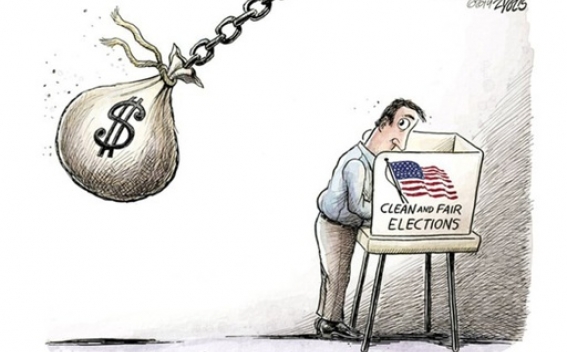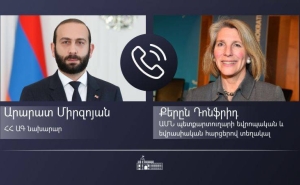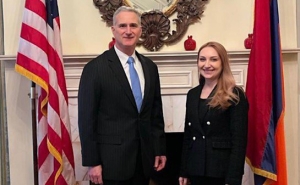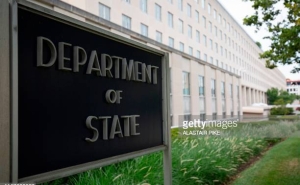US Election Campaign Finance: How Does It Work?

"Stamp Money out of Politics" - in 2012 you could easily find a dollar bank note in the US with this message on it, as approximate 900 people could see the money after it entered circulation. The anti-corruption campaign organized in the US by http://www.stampstampede.org/ in the year of previous presidential elections had the following slogan: "If 1 person stamps four bills a day for a year, the message will reach 1 million people." The campaign which expanded to include 35,000 people aimed at struggling against corruption in the US presidential elections. This was a unique method chosen by the campaign organizers to reach their messages: "Corporations are not people" and "Not to be used for bribing politicians," to the politicians. But what is it about? Why do the US citizens struggle against "corporations" to eliminate corruption from the US politics?
The article aims at answering these and many other questions by explaining how the campaign finance works in the US.
To understand how the campaign finance works in the United States it is important first of all to make distinction among the existing methods contributions are made. The methods in general are divided into two types: Public Financing and Private Financing.
The legislation on Public financing was introduced in 1976 by Federal Election Commission (FEC) and is aimed at reducing the role of large private contributors in elections. Public financing is collected from the ordinary tax payers, who can donate $3 to the presidential Election Campaign Fund. A candidate or parties, who agree to receive public financing during the elections, must present a letter of agreement in which he/she is to comply with certain rules including "limit spending to amounts specified by the campaign finance law". The amount defined by the law to a party nominee is $20 million, if he agrees to limit his/her campaign financing to that amount. It should be noted that because of this limitation most candidates do not turn to public financing instead preferring private one.
Private financing in its turn is divided into the following sub-categories: Political Action Committees (PACs), 527 groups and individual contributors. The US Federal Election Commission deifies PACs as registered political committees established to make donations to separate candidates or political parties. PACS can be of two types: separate segregated funds (SSFs) and non-connected committees. The former is established and administered by corporations, labor unions, membership organizations or trade associations. In contrast, the latter is not sponsored by or connected to any entities and is free to make donations from the general public. PACs can donate $5,000 to a signal candidate and $15,000 to a party.
As opposed to PACs, 527 groups operate independently from FEC, because they do not donate directly to candidates or political parties. During the recent years those groups became widely popular by the role they play in the elections. Those groups are engaged not only in positive but also in negative campaign. As a vivid example of negative campaign can be brought forward the controversy connected with John Kerry’s Presidential campaign in 2004. A popular 527 group, Swift Boat Veterans for Truth, organized a negative campaign against Kerry challenging his military record and the medals he got during the Vietnam War. The negative campaign against Kerry was later discredited; instead a new term was coined "swiftboating," which stands for unfair political attack.
The third source of private financing, which constitutes the lion’s share of the election campaign, comes from individual American citizens. For example, president Obama received 715$ million from individual contributors in 2012 elections, while in 2008 elections the amount was 656$ million. However, in this case also like in case of PACs there is a limit - one donor individual can pay to a candidate. This limit is adjusted for each election cycle and for the current elections cycle (2015-2016) the limit per individual to donate for a candidate is 2.700$ per election.
The things have changed since 2010 US Supreme Court ruling, which introduced changes in 2002 campaign-finance reform law in Citizens United v. Federal Election Commission as a result of which the so-called super PACs came to the front. As opposed to other means of donations mentioned above in case of super PACs there are no limits and individuals, corporations and unions can denote unlimited amount of money to these super PACs. 
The ruling caused much debate in the US politics with some people calling it as an end to the US democracy. The thing is that the opportunity given to different individuals, corporations and unions to donate as much as they wish to separate candidates, increased their control over those candidates, making them to act in the interest of those big donors. For example in the 2012 election 32 major super PAC donors taken together gave more money than the millions of ordinary Americans, who donated less than $200 each to Barack Obama or Mitt Romney. Consequently more than 60 percent of all super PAC funds came from just 159 donors, each of whom gave more than $1 million, politico.com informs.
At present, when 2016 presidential elections in the US are ahead, the debate on super PACs reactivated. Jeb Bush, brother of younger Bush, has already got a super PAC, called "Right to Rise," which intended to raise money up to $100 million by May, the Guardian reports. Another candidate Ted Cruz, during the meeting with Republican Jewish Coalition in Las Vegas in April, declared that the super PAC supporting him "had raised $31m." Pro-Clinton super PAC, Priorities USA Action, is expecting to gather $15 million by the end of June.
The analysis of the campaign finance system reveals that such new tendencies, as the so-called super PACs, introduced after 2010 Supreme Court ruling, in reality can pose a real challenge to the US democracy. Although this type of funding has existed only for 5 years, super PACs have already managed to play a determinant role in the US elections, the proof of which is the data on 2012 presidential election, presented above. The fact that a single corporation, individual etc. can donate as much as it wants to a candidate, gives no room for doubt to the authority of that corporation, individual etc. over that particular candidate. Here we are to face a common threat to democracy, when business and politics become merged and the political actors start to act in the interest of the major business actors.
Other materials on this subject
- Turkey is sending Cold War-era cluster bombs to Ukraine – FP The weapons are designed to destroy tanks by bursting into smaller submunitions, which can linger on the battlefield for years if they do not immediately explode. Each round scatters about 88 bomblets.
- Los Angeles mayor and city council president address US president on Lachin corridor issue Thank you, Mayor Bass, for joining me in communicating to President Biden the urgent need for U.S. leadership to lift the blockade and bring humanitarian relief to the people of Artsakh.
- US Committed to Helping Armenia and Azerbaijan Resolve Issues Peacefully: Blinken Spoke With Pashinyan The Secretary reiterated our commitment to helping Armenia and Azerbaijan resolve issues peacefully.
- Iran to Submit Final Conclusion Over Nuclear Deal Revival by Midnight In comments on Monday, Amirabdollahian said Iran is going to send its final conclusion about the JCPOA talks to the European coordinator in written form at midnight.
- Erdogan, Biden Might Meet in September- Media Turkey plans to buy 40 F-16 fighter jets from the US and upgrade another eighty. US President Joe Biden stated that he expects to receive the approval of the [US] Congress to sell F-16 fighter jets to...
-
 17:08
17:08The regular session of the Anti-corruption Policy Council takes place in Jermuk
-
 15:05
15:05The Prime Minister sends congratulatory messages to the supreme leader of Iran and the President of Iran
-
 11:11
11:11Armenia sends earthquake aid to Turkey
-
 10:43
10:43Commemoration of the Pontiff St. Sahak Partev
-
 09:16
09:16Some roads are closed and difficult to pass in Armenia
-
 19:55
19:55Phone conversation of the Foreign Minister of Armenia with the U.S. Assistant Secretary of State for European and Eurasian Affairs
-
 18:30
18:30Prime Minister Pashinyan and President Khachaturyan meet
-
 18:20
18:20Ararat Mirzoyan with Co-Chairman of the OSCE Minsk Group of France Brice Roquefeuil
-
 17:01
17:01Humans could land on Mars within 10 years, Musk predicts
-
 16:45
16:45France, US urge 'immediate' end to Nagorno Karabakh blockade
-
 16:01
16:01Blockaded Nagorno Karabakh launches fundraiser to support quake-hit Syria
-
 15:59
15:59Earthquake death toll in Turkey rises to 18,342
-
 15:43
15:43Ararat Mirzoyan Held a Telephone Conversation with Sergey Lavrov
-
 15:06
15:06French president rules out fighter jet supplies to Ukraine in near future
-
 14:47
14:475 Day Weather Forecast in Armenia
-
 14:44
14:44President Vahagn Khachaturyan wrote a note in the book of condolences opened in the Embassy of Syria in Armenia
-
 14:20
14:20Azerbaijan’s provocations impede establishment of peace and stability – Armenian FM tells Russian Co-Chair of OSCE MG
-
 12:57
12:57France representation to OSCE: Paris calls on Azerbaijan to restore freedom of movement through Lachin corridor
-
 11:40
11:40Command of Kosovo forces highly appreciated preparation of Armenian peacekeepers
-
 10:16
10:16The United States withdrew from sanctions against Syria for six months the provision of assistance after the earthquake
day
week
month
Humidity: %
Wind: km/h









